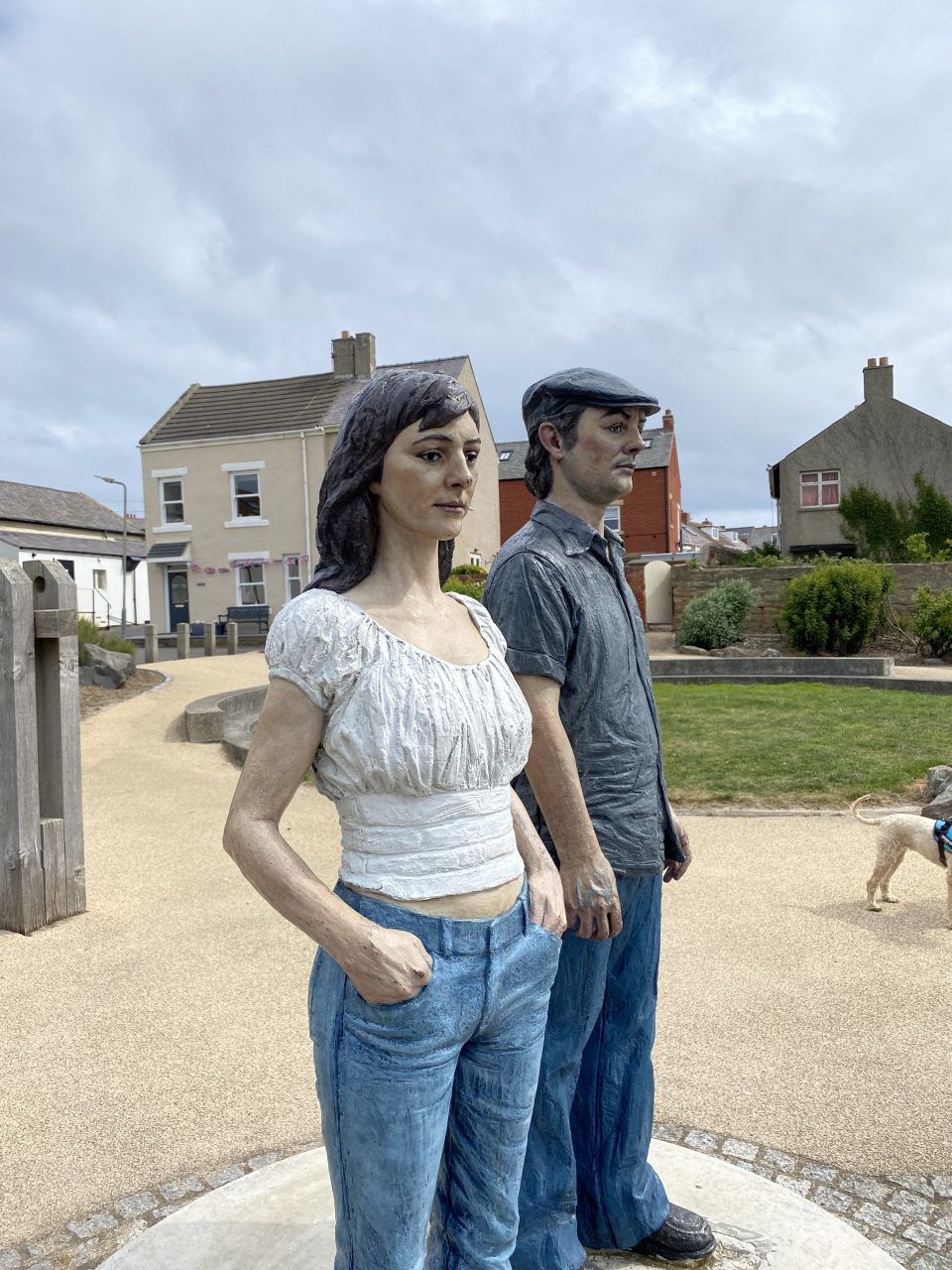I find myself taking a lot of photos of the beach, the Sea and the sky. I like the horizontal lines, and I like them to have order. Sea and sky meet in the middle of the photos as a central horizonal divide. If the beach is involved, then I like things in thirds – thank you very much. Which came first my love for equal framing or my love for Wes Anderson?
Anyway, in Newbiggin we have a statue out in the bay. Two figures stand staring out to sea. There is a smaller “couple” on the prom and up-close you see that they are facing slightly away from each other. It gives the sense of them being together and yet, they are alone in their thoughts. They stare out to sea into the liminal intersection between sea and sky – Is God there?
In her book ‘Grounded’ Diana Butler Bass argues that our scientific understanding of the way the earth and the universe works has challenged some of our ways of speaking about the mystery of God. Christianity has become caught between a literal certain view of the bible and the challenge of science. Now whether people really thought God lived in the sky or whether it acted as a useful metaphor: God was outside; somewhere else; across the numinous divide. This vertical faith puts us down here and God up there, and she suggests that where steeples and spires come in. Our gaze is lifted upwards as the building point to the sky. But now we know God’s not there – where do we go? She suggests that horizon allows us to reframe our view as a horizontal faith. Heaven is far away and yet so close.
‘The sky begins at our feet. Thus, we actually live in the heavens now, in the space in which earth and sky meet.’1
Is this why I have an existential draw and reaction to standing on the shore and looking out to sea? I certainly don’t think I’m alone in this. Whether it be on a mountaintop, on the flat plains (as Diana found), or by the sea staring at the intersection between land or sea and sky, in the always-just-out-of-view line communion – I sense God.
‘When I think of the far-off qualities of God, I no longer think “up”; Instead, I consider God beyond the horizon, just beyond the place where sky meets the ground. The spirit calls our gaze outward, to lift our eyes to the edge. The Spiritual revolution is the shift from a vertical God to the God-with-us. Dirt and water are understandable and tangible, icons of earthly sacredness. But we need the sky to remind us that no matter how close God is, God is still the one who hovers at the horizon.’2
This weeks blog was written by John Cooper. We will be meeting in Gardens again this week so if you would like to meet up at 7:30pm we will be at David and Naomi’s house. If you would like to come please let David know via Discord, Messenger, Carrier Pigeon etc
Questions:
Sunset or Sunrise?
Where is your favourite spot to sit and admire the sky meeting earth or sea? Could you bring a photo?
Have you had a moment of revelation/ numinosity/ transcendence when you have looked at the horizon?
What do you think about Diana Butler Bass’s idea of vertical faith? How have you seen it in action?
Has your view changed, and, of so, how would the horizon help you find God in the horizontal?
1 Diana Butler Bass. (2017). Grounded : finding God in the world–a spiritual revolution. Harperone, An Imprint Of Harpercollins Publishers. P120
2 Butler Bass. (2017). Grounded P121
This post is written by one of our many friends. At BeachcomberFX we love to hear what others have to say and are always on the lookout for people who want to share their thoughts or stories with us.
